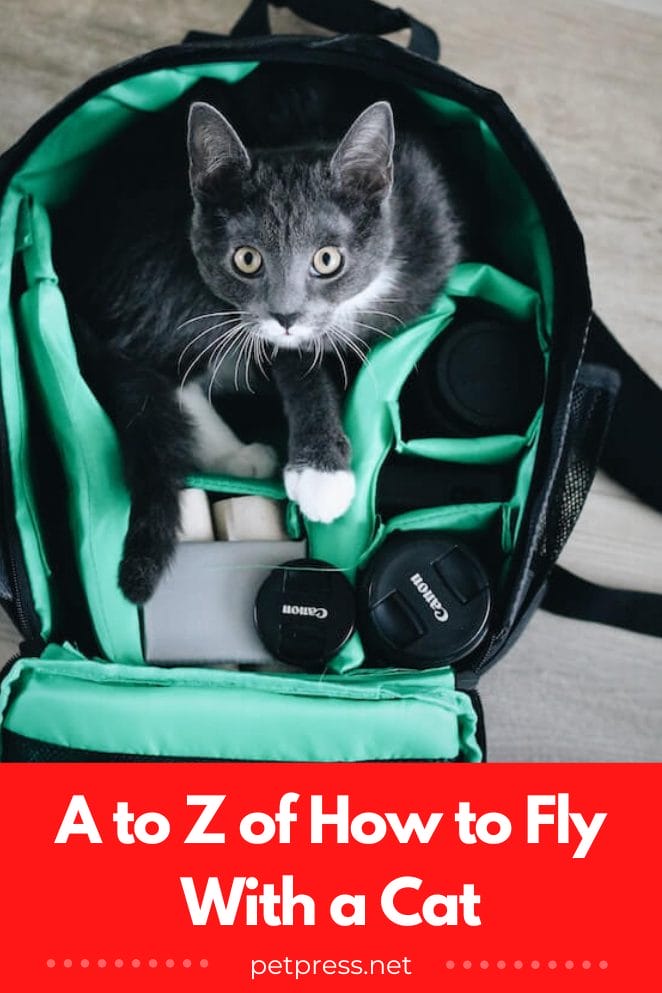
Have you ever flown on an airplane with a cat? Are you wondering How to fly with a cat?
If so, then we assure you that it can be quite an adventure!
Cats are curious creatures, and they often want to explore everything around them. This can include the inside of an airplane cabin.
So, if you’re flying with a cat, be prepared for some potential antics. Your feline friend may decide to walk up and down the aisle or explore every nook and cranny of the plane.
Of course, not all cats will be so adventurous. Some may prefer to curl up in their carrier and take a nap. But even these more laid-back cats can add some excitement to a flight!
Petpress has come up with the top question that cat parents might have about flying with their cats.
Can I take my cat on a plane with me?
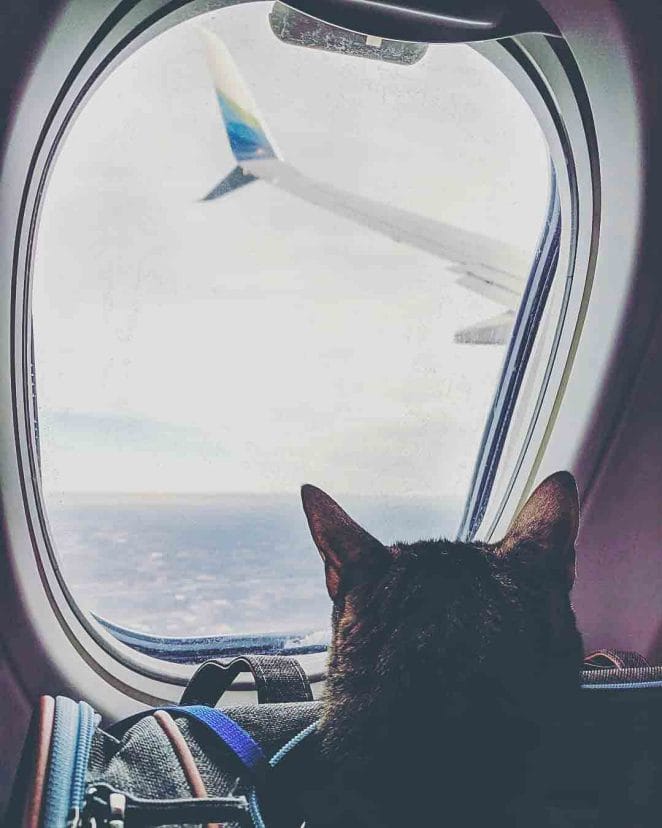
Yes, you can take your cat on the plane. But, there are a few things to consider before packing up your cat for a trip to the friendly skies.
- First, check with your airline to see if they allow pets on board. Some airlines do not allow pets at all, while others only allow certain types of animals.
- If your airline does allow pets, find out what kind of restrictions they have. For example, some airlines require that your pet is in a carrier that fits under the seat in front of you. Others may have a different size or weight requirements.
- Also, keep in mind that even if an airline allows pets, they may not be allowed in the cabin on all flights. This is usually due to space constraints, so it’s important to check in advance.
If you’re planning to travel with your cat, the best thing to do is call the airline ahead of time and ask about their policies. That way, you can make sure that both you and your feline friend are prepared for a comfortable journey.
What should I give my cat before flying?
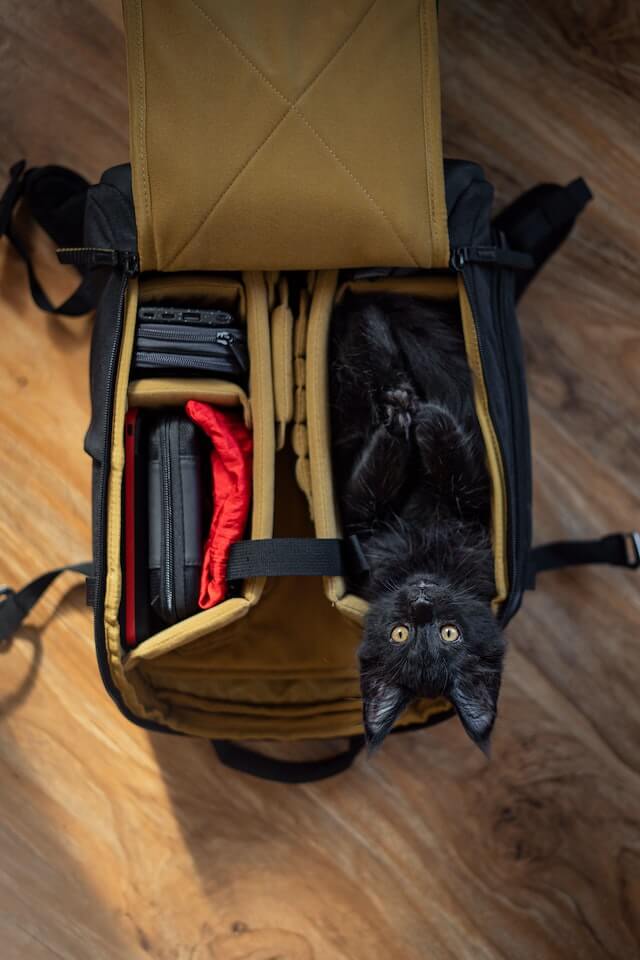
- When it comes to flying with cats, preparation is key. Make sure that your cat’s carrier is comfortable and spacious enough for them to move around in.
- Feed a light meal to your cat for a happy tummy on the flight.
- It’s also a good idea to get your cat used to their carrier before the flight, so they don’t get stressed out on the travel day.
- Carry a litter box for your cat.
- There’s no need to give your cat a sedative before flying, as they’re unlikely to experience any distress. However, if you think your cat would benefit from some calming medication, speak to your vet about suitable options.
- It’s also a good idea to make sure your cat is well-hydrated before flying, so offer them plenty of water in the days leading up to the journey. With a little planning and preparation, flying with your cat can be a breeze!
How much does it cost to take a cat on a plane?
The cost of taking a cat on a plane will vary depending on the airline, but it is generally between $50 and $200. So, if you’re planning on flying with your feline friend, be sure to check with your airline first. And, of course, don’t forget the cat carrier!
How do you go through TSA with a cat?
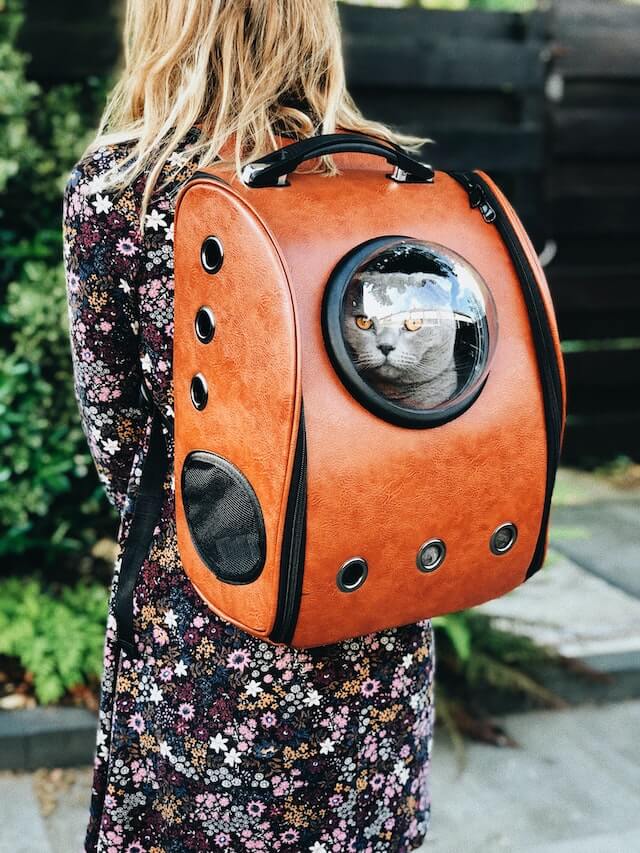
Before embarking on a journey with your cat, you have to make it through airport security. Here are a few tips to help get you (and your cat) through the process with as little stress as possible:
1. Know the rule: Each airline has its own policies when it comes to transporting cats, so be sure to check with your carrier before booking your tickets. Some may require that your cat should be in a carrier that fits under the seat in front of you, while others may allow larger carriers that have to be stored in the overhead bin.
2. Give yourself plenty of time: Getting through airport security can be a bit of a process, even without a cat in tow. So make sure you allow yourself plenty of time to get through the line and get to your gate.
3. Have your paperwork in order: If your cat is going to be traveling in the cabin with you, you’ll need to have a health certificate from your veterinarian that states that your cat is up-to-date on all vaccinations. Some airlines may also require a rabies vaccine certification.
4. Keep your cat calm: Airport security can be a stressful experience for both you and your cat. Be sure to keep your cat in her carrier as much as possible and try to stay calm yourself. If your cat starts to get agitated, offer her a treat or toy to help keep her calm.
5. Be prepared for the x-ray machine: Most likely, your cat’s carrier will need to go through the x-ray machine at security. This can be a bit of a scare for your cat, so try to hold her carrier close to you and talk to her in a soothing voice as it goes through the machine.
Is flying hard on cat ears?
No, not really. Cats have a special adaptation that allows them to close their ear flaps when they fly, which protects their delicate inner ears from pressure changes. So, if your cat is giving you dirty looks after a flight, it’s probably just because they don’t appreciate being cooped up in a small space for hours on end.
How do you calm a cat down on a plane?
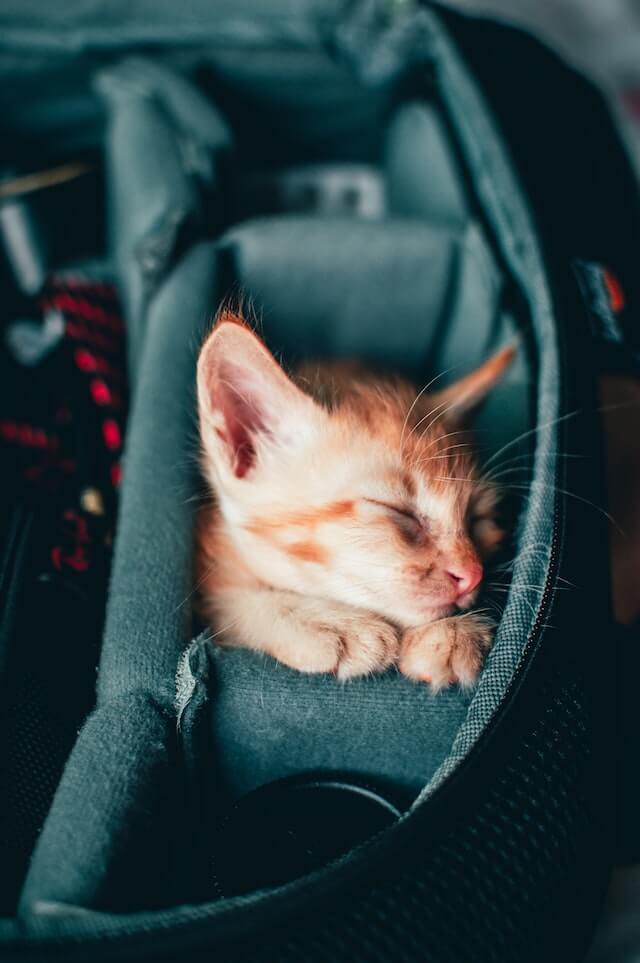
If you’re one of those people who get anxious just thinking about flying, the last thing you want is to have to deal with a stressed-out cat on top of it all. Luckily, there are a few things you can do to help keep your feline friend calm during the flight.
- First, make sure you have everything you need for the trip before you even get to the airport. This includes packing their carrier with food, water, and any toys or treats that will help them relax.
- It’s also a good idea to put a blanket in the carrier so they have something familiar and comforting to snuggle up in.
- Once you’re at the airport, try to keep your cat in their carrier as much as possible. The more they’re out of it, the more likely they are to get agitated. If you have to take them out, do it as quickly and smoothly as possible.
- Teach them tricks to keep them disciplined so that your travel is hassle-free.
- On the plane, keep the carrier under the seat in front of you so your cat feels like they’re in their own little space.
- If they seem particularly stressed, you can try putting a shirt that you’ve worn over the top of the carrier so they can smell your scent and feel reassured.
- If all else fails, there’s always the old standby of giving them a sedative prescribed by your veterinarian. This should only be used as a last resort, however, as it can be dangerous for some cats. It’s always best to talk to your vet beforehand to see if this is an option for your cat.
Final Words
Cats are the perfect flying companions! They’re small, so they won’t take up a lot of space in your overhead compartment. And they’re not afraid of heights, so they’ll be perfectly content looking out the window at the clouds.
So if you’re looking for a furry friend to join you on your next flight, consider a cat! They might just be the purr-fect travel buddy. Bon Voyage!


GIPHY App Key not set. Please check settings